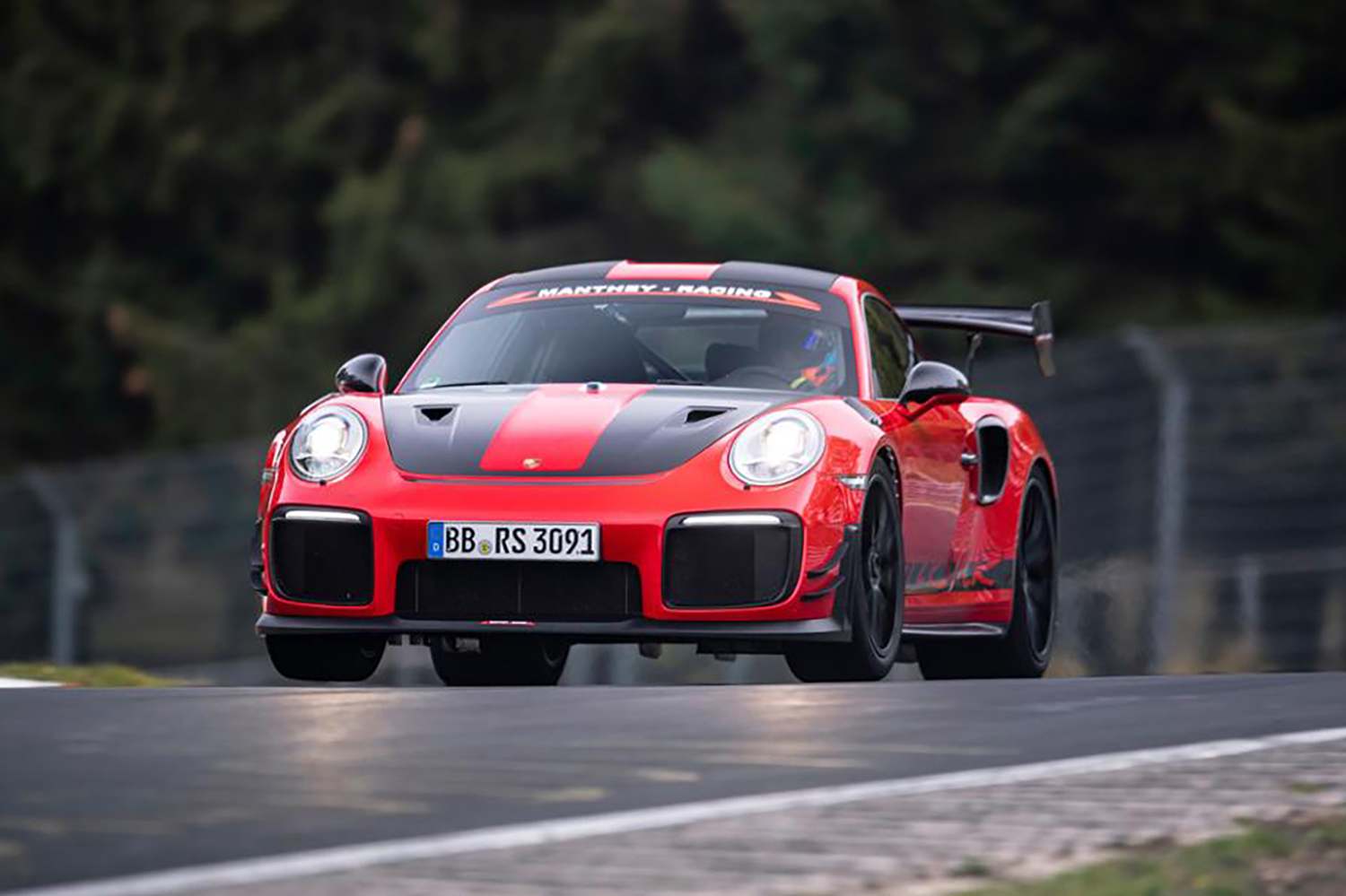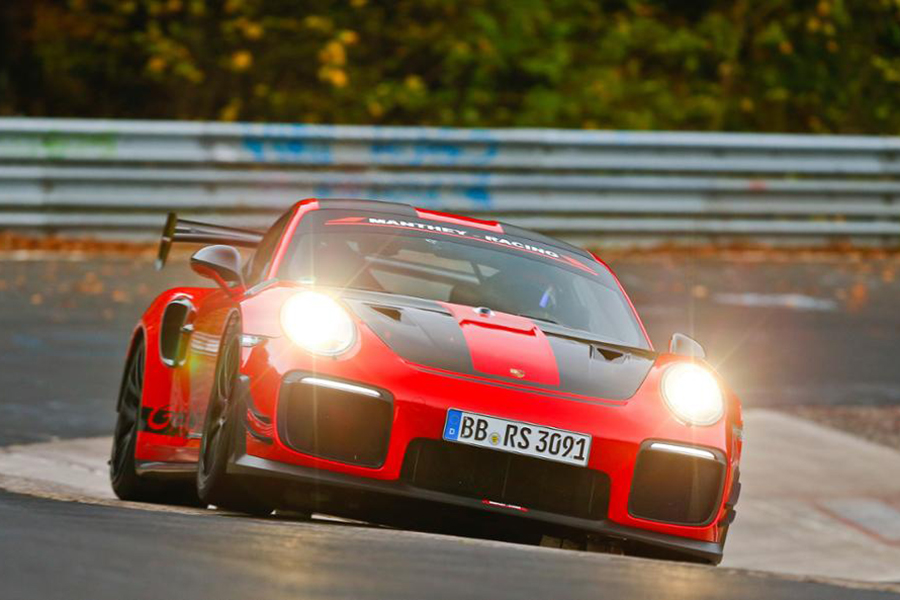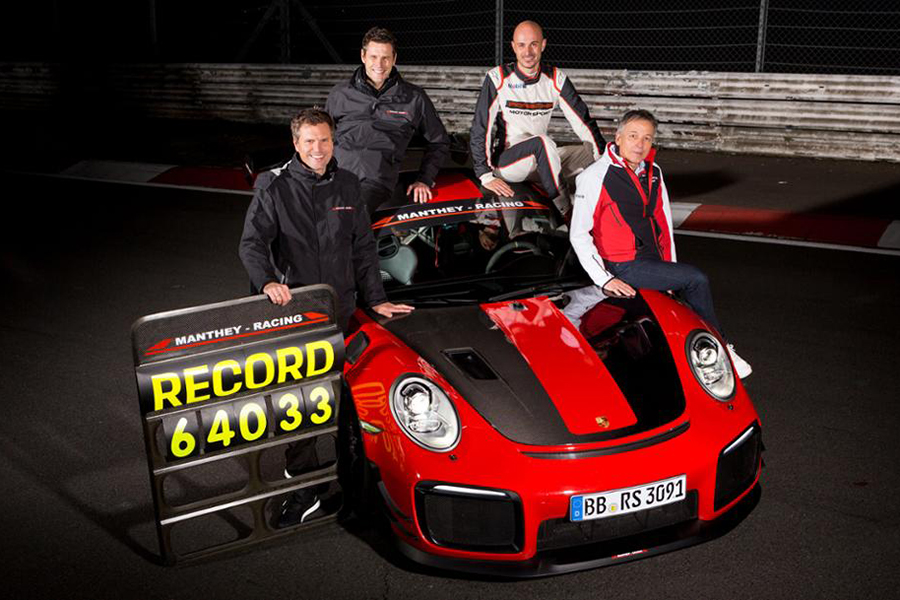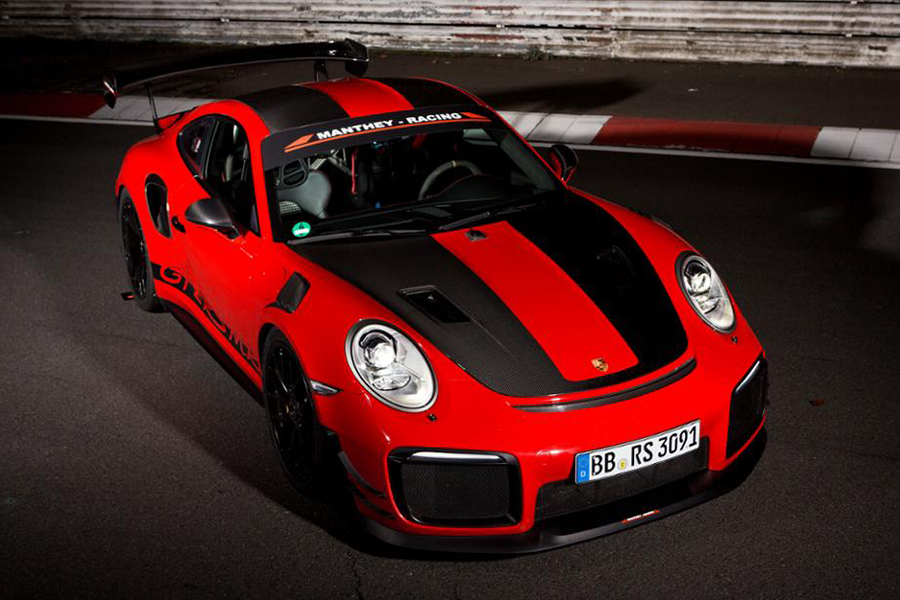It honestly hasn’t been that long. Maybe a few months? I can still remember picking my jaw up off the floor when Porsche announced the Nurburgring production car record it smashed with the marque’s all-new 911 GT2 RS. Then, I distinctly remember Lamborghini, Porsche’s sister from another mister, raining fire and brimstone upon “The Green Hell” and smiting the GT2 RS’ time with the frighteningly savage Aventador SVJ. Apparently, nobody told the Germans both Lamborghini and Porsche are on the same team because Porsche is back with another balls-out record smash in the newly coined Porsche GT2 RS MR.
In September 2017, Porsche announced that the 911 GT2 RS had scalded the Nurburgring in a barely believable 6:47.30. A time that, at its announcement, was five seconds quicker than the previous record set by Lamborghini’s Huracan Performante. Then, in July 2018, Lamborghini posted a 6:44.97 lap time that smoked the Porsche’s.
Now, with the Ring-Ready GT2 RS MR, the ballsiest 911 ever, shaved another four seconds off its time to return to the starting grid in just 6:40.3. That is a time we don’t think will be challenged any time soon. Though, now that we look at the rivalry in the House of Volkswagen, it could be sooner than we think.
How Porsche beat the record is down to one variable: Manthey Racing. Using a Nurburgring-specific upgrade and optimization kit, Porsche and the engineers at Manthey Racing were able to essentially set the 911 GT2 RS MR to do one thing and one thing only, dominate the Nurburgring’s ballistic track. The modifications, however, were fairly limited and mostly consisted of optimizing the supercar’s chassis and aerodynamics. The driver, Lars Kern, who’s one of Porsche’s development driver’s, also only had a single session to set a time adding to just how truly quick this car is when built with a singular goal.
Dr. Frank-Steffen Walliser, Porsche’s head of motorsport and GT Cars, said, “In this test drive, we simply wanted to assess the potential of the vehicle once more. The result is quite impressive. It really is a fabulous time. This shows again very clearly the exciting possibilities of this sports car.”
Better yet, Porsche’s partnership with Manthey Racing and this record produced parts that can be ordered for customer GT2 RS’ right now. That means you too could have a ‘Ring demolishing super beast so long as you have the cash and the chutzpah to take it to the ragged edge.
Your move, Lamborghini.






